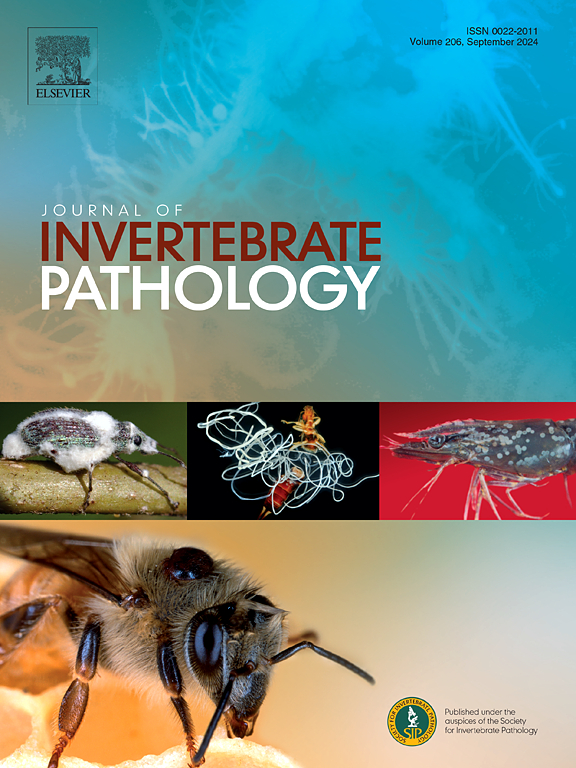Chitin-amended media: Improving efficacy of Cordyceps fumosorosea as a control agent of Cydia pomonella
IF 3.6
3区 生物学
Q1 ZOOLOGY
引用次数: 0
Abstract
The microbial control of insect pests such as the codling moth Cydia pomonella is a major challenge in the apple industry. This study investigates the potential of chitin-amended media to improve the efficacy of the entomopathogenic fungus Cordyceps fumosorosea strain JKI-BI-1496 for control of C. pomonella. Chitin, a key component of insect exoskeletons, colloidal chitin (CC) or chitosan were added in two concentrations to the liquid growth media. Only by the amendment of 0.5 % chitosan significant higher numbers of spores were formed whereas the highest biomass was achieved by amendment of chitin. Spores produced in chitosan had no significant effect on the mortality of C. pomonella. But media containing 1 % colloidal chitin (CC) significantly enhanced the efficacy of C. fumosorosea. To achieve 75 % mortality only 1.6 × 107 submerged spores/mL were needed in comparison of over four times higher concentrations in media without CC or chitin. However, while 1 % CC positively impacted spore viability during the freeze-drying formulation process, it had a detrimental effect on the fungus’s resilience under prolonged sunlight exposure. These findings provide valuable insights into optimizing media and formulations to enhance the effectiveness of C. fumosorosea in biological control, particularly by improving spore production and formulation processes.

几丁质改性培养基:提高烟孢冬虫夏草防虫效果
害虫如冷蛾的微生物控制是苹果工业面临的主要挑战。本研究探讨了几丁质改性培养基对昆虫病原真菌烟孢虫草JKI-BI-1496的抑菌效果。将昆虫外骨骼的关键成分甲壳素、胶体甲壳素(CC)和壳聚糖(壳聚糖)以两种浓度添加到液体培养基中。当壳聚糖用量为0.5%时,孢子数量显著增加,而甲壳素用量最高。壳聚糖中产生的孢子对pomonella的死亡率无显著影响。而含有1%胶体几丁质(CC)的培养基能显著提高烟孢菌的抑菌效果。要达到75%的死亡率,只需要1.6 × 107个淹没孢子/mL,而在没有CC或甲壳素的培养基中,淹没孢子/mL的浓度要高出4倍以上。然而,在冻干配方过程中,1% CC对孢子活力有积极影响,但对真菌在长时间阳光照射下的恢复力有不利影响。这些发现为优化培养基和配方以提高烟孢霉的生物防治效果提供了有价值的见解,特别是通过改进孢子产生和配方工艺。
本文章由计算机程序翻译,如有差异,请以英文原文为准。
求助全文
约1分钟内获得全文
求助全文
来源期刊
CiteScore
6.10
自引率
5.90%
发文量
94
审稿时长
1 months
期刊介绍:
The Journal of Invertebrate Pathology presents original research articles and notes on the induction and pathogenesis of diseases of invertebrates, including the suppression of diseases in beneficial species, and the use of diseases in controlling undesirable species. In addition, the journal publishes the results of physiological, morphological, genetic, immunological and ecological studies as related to the etiologic agents of diseases of invertebrates.
The Journal of Invertebrate Pathology is the adopted journal of the Society for Invertebrate Pathology, and is available to SIP members at a special reduced price.

 求助内容:
求助内容: 应助结果提醒方式:
应助结果提醒方式:


